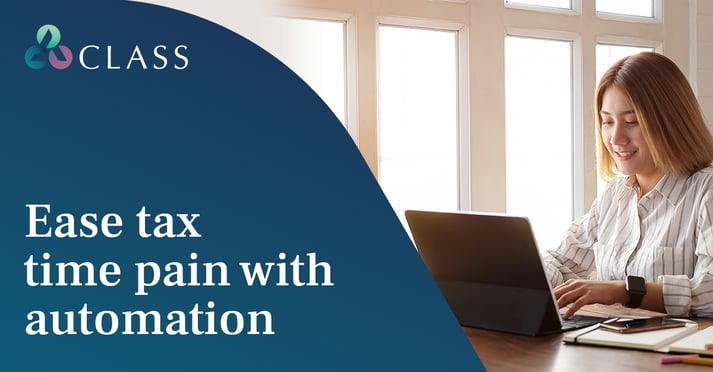

The end of the financial year means wrapping up 12 months of activity for clients, lodging records with the Australian Taxation Office and finalising accounts. It is a time when every client needs attention and accounting practices’ resources are stretched. This is why more and more accounting processes are relying on automation to reduce manual work and streamline processes.
The EOFY looks different to different accountants. Some clients will have a shoebox filled with receipts to sort through, while others will have complicated corporate structures an accountant must assess to achieve the best tax outcome for the entity as a whole. The ideal scenario for reducing the pressure on a practice involves spreading the work throughout the year and removing mundane processes from workflow.
This is where technology and automation come into play. Software can streamline your processes, drastically reducing complexity and the time spent on EOFY administration. Automation can replace many time-consuming tasks and reduce human error.
- Know what processes you need to review
- Know what services you intend to deliver
- Research what systems you need to deliver those services
- Learn how different systems and platforms integrate to allow you to build an ecosystem designed for your business.
Once your business completes these steps and implements a plan, you'll have taken the first step towards a more manageable tax time workload.
Regular processing eases EOFY workload
One of the most impactful changes an accountant with the right technology can make is a move towards processing accounts daily instead of quarterly or yearly. Chipping away at the work as it comes through makes the end of the year much easier. Platforms such as Xero allow the user to process transactions as they come into the system, through live connections with entities like banks. Class Super provides more than 200 data feeds for banks, brokers and wraps that automate the processing of income entitlements, provide daily reconciliation of transactions and enable instant and automated tax statements.
The technology will provide a platform for the integration of other digital services as well, such as receipt recording, time tracking or expenses management – all of which will save time. Such cloud-based solutions also prepare clients for unforeseen events that may prevent them from meeting with you.
Remove mundane workflow processes
The best use of automation is the removal of the mundane from workflow and cloud-based processes make this happen. Class Super's Tax Statement Automation feature was created out of the need to reduce tax time pain, save time and increase reliability. It enables accountants and administrators to view a list of all tax statements in the console that require processing and actions required. They can then generate statements individually or choose to process in bulk. The solution brings an average saving of 30-minutes per fund and 10-minutes per tax statement.
In Australia, we are fortunate to have adopted cloud technology rapidly and have it as a trusted mechanism. The cloud has become such a vital part of Australian business that the ATO works with technology companies to help them build their systems and features around what automation can achieve. For example, automation has refined end-of-year lodgement of tax returns for individuals. Technology can pre-fill a person’s return with salary information, bank-account interest, dividends received, share activity, and private health details – all because this data is linked from various government agencies to the individual and their platform. Not only has this saved notable amounts of time, it has also drastically reduced the number of letters the ATO sends out due to lodgement of incorrect information.
There is already discussion in Australia of making pre-filled returns available for non-individuals, too, but that will take some time. Trends also point towards standardised invoicing, which would be another step on the road to nationwide automation.
Know the automation ecosystem
The ability to work across a range of products is going to be an in-demand skill. Accounting practices that want to move to automated processes will find the most success if they know cloud solution providers well and can work with multiple solutions. Technology is not one-size-fits-all.
You may be able to recommend solutions for your clients based on what will work best with your systems but you still need to be familiar with the other services on the market and understand their efficiencies so you can work with your clients accordingly.
Time to identify strategic outcomes
For larger entities, automation not only allows for more efficient processing, but also frees up time for complex work such as tax planning. For a large, multi-tiered organisation to achieve the best tax outcome, time must be put aside in April or May to develop high-value strategies for end-of-year finances. Automating as much as possible through a system-wide cloud integration gives tax advisers and specialists the time they need.
Automation can also give accounting firms the time to offer more products and services, such as virtual CFO functions for small businesses.
Improve client engagement
Bringing clients along on the automation journey requires providing onboarding of the technology they will need to interact effectively with your business. This might mean gaining their approval for services such as the digital signing of documents or asking them to consider partner services for their platform.
To ensure clients are on board, you will need to be prepared to recommend software or advise on a choice. You will also need to provide them with a clear objective, so they understand the importance of automation on their end as well.
Cloud-based document creation
Integrated and automated systems allow not only for the gathering of data, but also for the processing of that data into tax statements and other valuable documents. NowInfinity creates legally backed documents from within the system, allowing a trustee or accountant to do everything they need to do from within the platform. Increased automation will create a growing need for this feature in the future.
It’s all about time
With the right systems in place, platforms to manage the work, and partner services lined up to integrate seamlessly with you and your clients’ setups, the amount of time saved can be dramatic. Class customers report being able to complete an end-of-year lodgement for an SMSF is under one hour.
Every practice can see the value in that.

.png)



Grow your business. Request a personalised Demo.
We’re here to help. Why not request a demo, so you can see first-hand how intuitive our solutions are, and the dramatic productivity gains they can deliver?